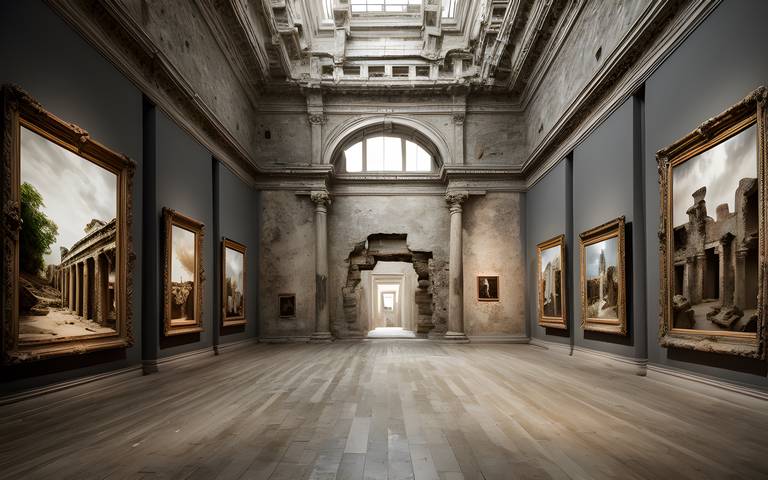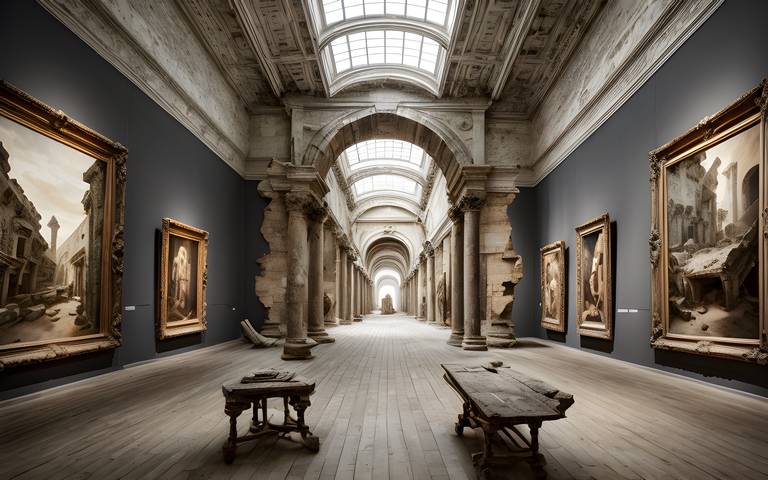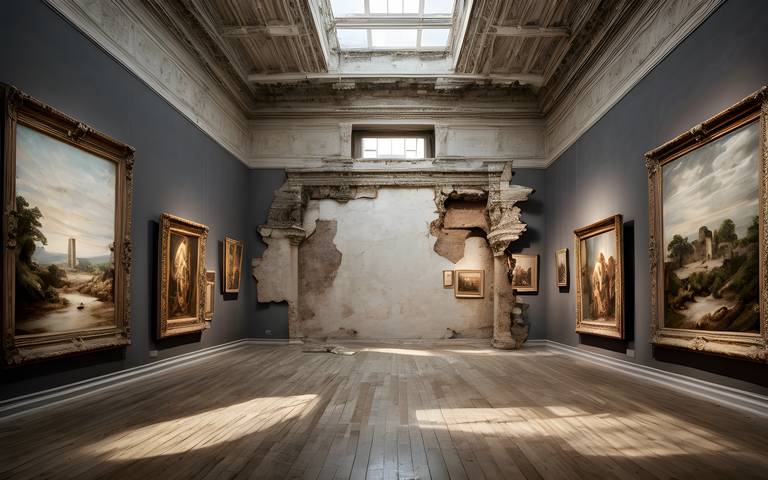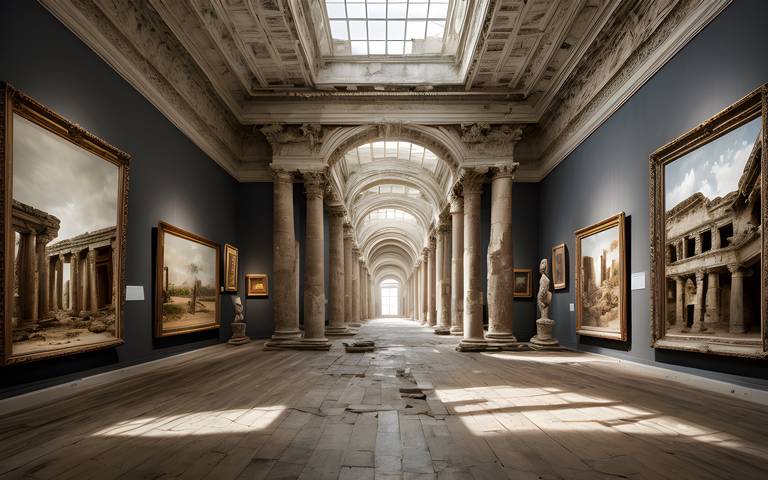pass through
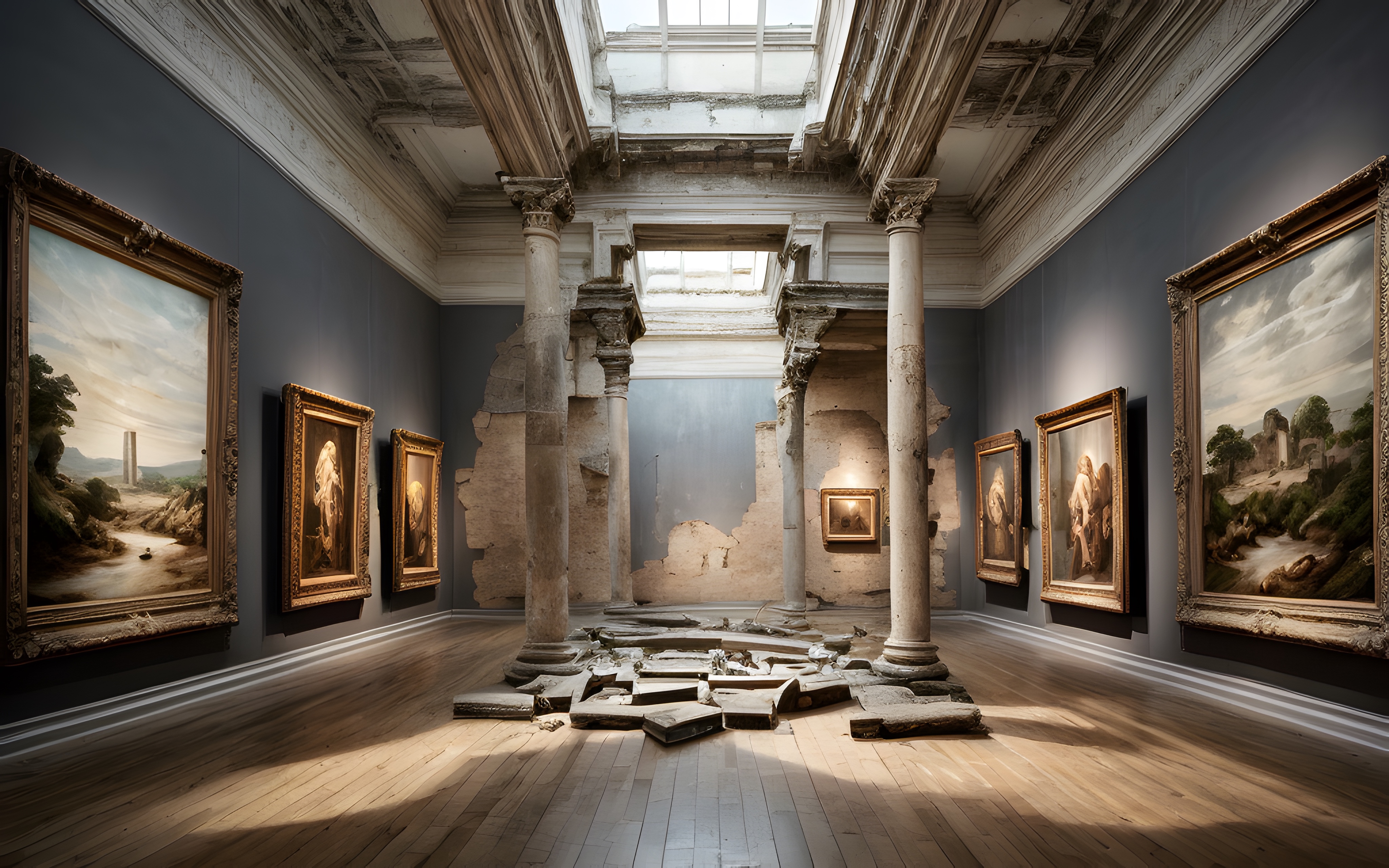
In einem Museumssaal mit einer antiken ruinösen Struktur, die durch ihre klassische Architektur gekennzeichnet ist, befinden sich grosse gerahmte Gemälde, die historische oder klassische Szenen zeigen. Der Raum ist mit Holzboden ausgelegt und verfügt über zwei kunstvoll verzierte Tische, die Besuchern eine Möglichkeit zum Ausruhen oder Lesen bieten. Die Decke ist detailliert gestaltet und ein grosses Oberlicht erhellt den Raum mit natürlichem Licht. Die Kombination aus natürlichem Licht und klassischen Designelementen verleiht dem Saal eine majestätische und zeitlose Atmosphäre, die die Kunsterfahrung des Besuchers verbessert. Die neoklassische Architektur des Saals mit korinthischen Säulen und Bögen schafft Tiefe und Perspektive. Die Gemälde sind ornamental gerahmt und zeigen historische Themen. Die Tische sind antik und rustikal gestaltet, im Kontrast zur verfeinerten Oberfläche des Saals.
Museum hall with an ancient ruinous structure, characterized by its classical architecture. The hall is lined with large framed paintings on either side, each one exhibiting what seems to be historical or classical scenes.
The floor is wooden, and there are two ornate tables suggesting a space where visitors can perhaps rest or read about the exhibits. The ceiling boasts a detailed design and there's a large skylight illuminating the space with natural light. This combination of natural lighting and classical design elements gives the hall a majestic and timeless feel, enhancing the viewer's experience of the art on display.
The architecture within the hall suggests a neoclassical style, with its use of Corinthian columns that support a series of arches, leading the eye towards the vanishing point at the end of the hall. This creates a sense of depth and perspective, making the space appear even more expansive.
The coffered ceiling is a hallmark of classical architecture, adding to the grandeur of the space. The use of skylights is particularly effective in this setting, as they provide ample natural light that enhances the textures and details of the architectural elements, as well as the artworks themselves.
The paintings are ornately framed, suggesting their value and importance, and are spaced evenly along the dark-toned walls, creating a rhythmic visual flow. The art appears to be of a historical or religious nature, given the common themes depicted in such works during the periods that are likely represented here.
The tables are rustic and seem to be antiques themselves, possibly serving as display surfaces or resting areas for museum-goers. Their design is robust with turned legs, indicating they may be from the Renaissance or Baroque period, which contrasts with the smooth, refined surfaces of the hall.
The color palette is a study in contrast and harmony. The dark, almost slate-colored walls provide a striking backdrop that makes the golden hues of the picture frames stand out. This choice of wall color is both sophisticated and modern, a contemporary touch that contrasts with the classical architecture.
The paintings themselves show scenes that could be from different eras, possibly ranging from the Renaissance to the 19th century, judging by the styles depicted within the frames. The scenes appear to include architectural ruins, religious figures, and classical landscapes. Such subjects were popular among European artists and collectors who valued the depiction of historical and mythological scenes for their educational and moral virtues.
AI generated (hess.works 2024)
